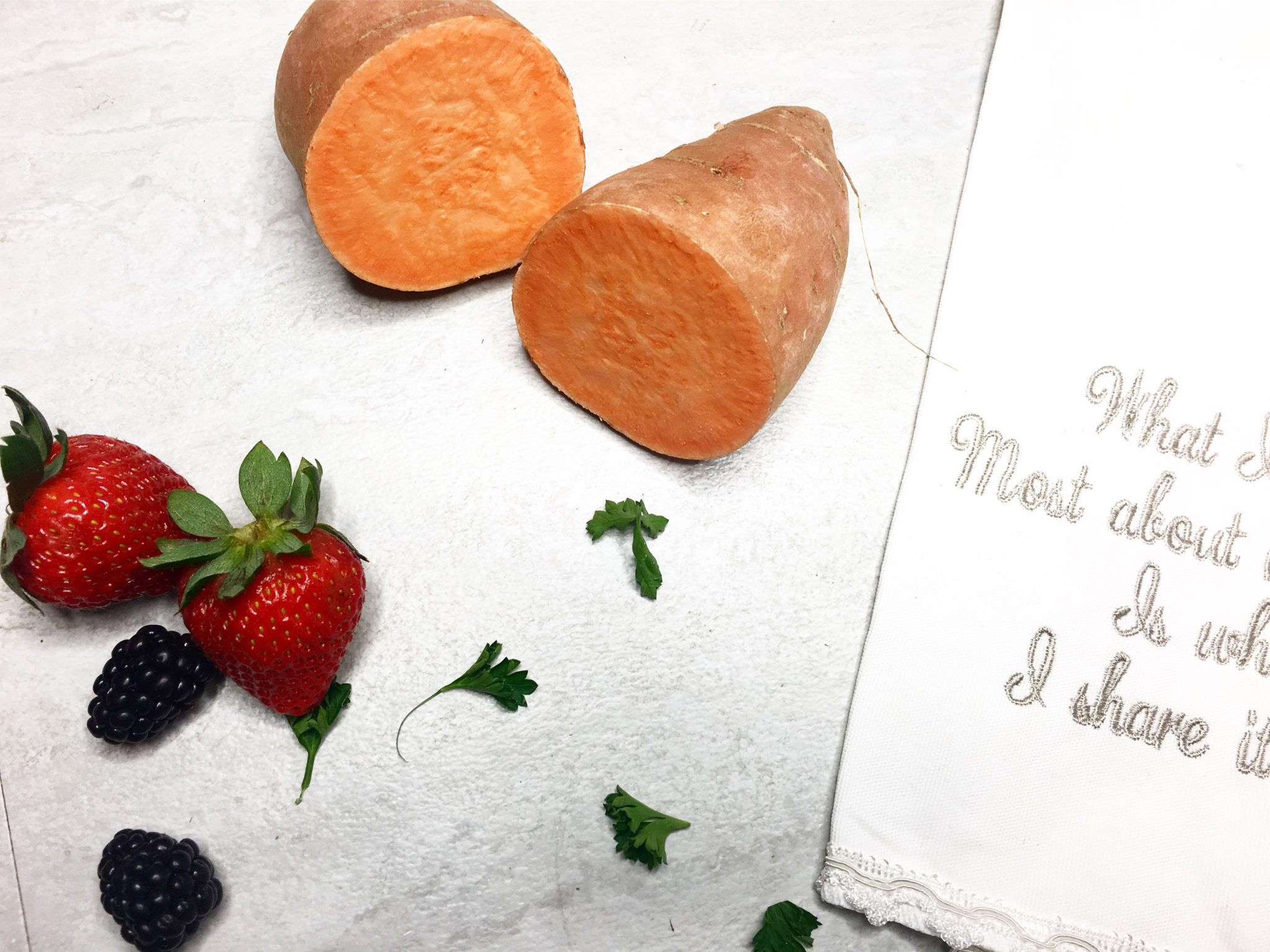
06 Mar What Carbs Are ‘Cool’?
This is probably the question I get asked most consistently. I mean, how could carbs not be confusing? Carbohydrates are without a doubt the most abundant macronutrient in our foods today. These sneaky little guys are hidden in almost everything we eat and can be extremely tedious to keep track of. Not to mention, they vary drastically in terms of their chemical makeup and that’s what makes them good or bad. Sooooo confused already, right? Fear not, fitfam! 😉 It’s not as complicated as you may think.
CARBS 101
There are 2 types of carbs and ALL carbs break down to sugars eventually. That’s right. ALL CARBS ARE SUGARS!
1. Simple carbs
2. Complex carbs
The primary difference in these two types of carbs is the time it takes to digest them and absorb them. Simple carbs are smaller sugar molecules that your body can absorb extremely quickly with little digestion efforts. Complex carbs take longer to absorb and your body has to work a little harder to digest them. Working harder is a good thing! Your body burns calories in the digestion process and your gut stays healthy!
GOOD vs. EVIL
There are really only 2 things that make a carb a bad choice:
1. Glycemic Index (aka how much glucose is in it)
2. Nutrient Content
Lucky for us, these 2 things are exactly what make a carb a good choice!
GLYCEMIC INDEX
The glycemic index of a given food is essentially a ranking system that tells you how much sugar (glucose) is in that food. Sugar is bad. Sugar causes inflammation in your body and is linked to diabetes, heart disease, autoimmune disorders, and tons of other disease states. You name it, sugar makes it worse. But, it tastes so good, right!?
I am not saying never eat sugar again. That would be tragic! But, if your goal is to get lean and have a flat tummy, it can be your worst nightmare. When you eat sugar, your body has to produce insulin to carry that sugar into your cells and make it a usable form of energy for your body. Insulin is a growth factor. The more insulin you produce, the more fat you store (especially in your midsection). The more sugar you eat, the more insulin your body has to produce.
Get it? Sugar = Body Fat.
Choose low glycemic foods as your carb sources. I am giving you guys a list of my favorite low glycemic foods below. These are easy and convenient and are much better options than high glycemic alternatives.
My Favorite Carb Sources:
Strawberries
Raspberries
Black berries
Blue berries
Grapefruit
Oatmeal (can add Stevia and cinnamon for flavor)
Brown Rice
Quinoa
Sweet potatoes
White potatoes
Rice Cakes
Ezekiel Bread
Whole Grains
Edamame
Spinach, Cucumbers, Peppers, Carrots, Squash, Zucchini, Pickles, Brussel Sprouts (ANY VEGETABLE)
** TIP** Not all fruit is created equal. Bananas, apples, grapes, and mangos have a high glycemic index. As a rule of thumb, berries are always lower in sugar and are better options.
NUTRIENT CONTENT
The nutrient content of the food you are eating should always be considered. In general, anything processed that has a longer shelf life than you do is going to be deficient in any quality nutrients. They add chemical preservatives and high heat to these foods, which eliminates the original nutrients the foods had in their natural raw form. Think of potato chips. Yes, potato chips are white potatoes. However, raw white potatoes contain fiber and are a good source of Vitamin B6, potassium, and other minerals. Potato chips on the other hand, have almost no nutrients your body can actually use. The other problem with processed carbohydrates is that the processing removes the requirement of digestion by our bodies. Complex carbohydrates like brown rice and quinoa must be digested by our gastrointestinal system before we can absorb their nutrients into our blood stream (body working = burning calories = good).
When carbs are heavily processed and no longer in their raw form, most of the break down process has already happened. Thus, our body has to work significantly less and can absorb the sugars directly into our blood stream, causing higher spikes in our insulin levels (Insulin = Fat). In general, whole foods in their raw, natural form are “good”. Extremely processed foods are “bad”. If you can’t see what grain, fruit, or vegetable your food came from in a very obvious way, don’t eat it.
I am sure you’re now asking yourself, “how many carbs can I eat?”
This is completely dependent on your goals for the time being. If you’re on the fast track for fat loss, you likely need to eliminate carbs completely for 2 weeks and then introduce them at 1 serving per day. 1 serving is roughly 30 g of carbohydrates. If your goal is maintenance or mass gaining, your carbohydrates will certainly increase. Read about other lifestyle changes that can help you feel and look your best here. 🙂

I hope this helps! If you have any questions shoot me an email @ [email protected].
Savanna Ray, PharmD


